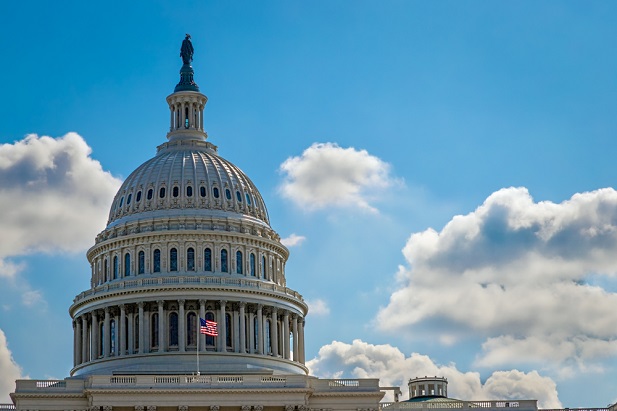 Ranking member Kevin Brady, R-TX, said he was “optimistic” the bill will land on President Trump's desk by the end of the year. (Photo: Shutterstock)
Ranking member Kevin Brady, R-TX, said he was “optimistic” the bill will land on President Trump's desk by the end of the year. (Photo: Shutterstock)
An amended version of the Setting Every Community Up for Retirement Enhancement, or SECURE Act of 2019, sailed through the House Ways and Means Committee today on a unanimous vote.
The bill includes a key provision on so-called Open Multiple Employer Plans that was left out of the legislation's original text when it was introduced last week.
For small employers, the SECURE Act increases the automatic escalation deferral cap from 10 to 15 percent for safe harbor 401(k) plans, increases small employers' tax credit for starting retirement plans, and creates a small employer tax credit for implementing automatic enrollment.
It also repeals the age cap on contributions to traditional IRAs, allows penalty-free withdrawals from retirement plans for child birth, and creates an annuity selection safe harbor for retirement plan fiduciaries, among many other provisions.
The mood during the markup hearing was functional throughout, and at times jubilant.
“One of my top priorities as Chairman of this committee is to help workers of all ages prepare for a financially secure retirement,” said Ways and Means Chairman Richard Neal, D-MA, who noted a “retirement income crisis” in his opening remarks.
“The SECURE Act goes a long way in addressing this problem by making it easier for Americans to save. Passage of this bill is a tremendous bipartisan accomplishment, and I hope to see the measure move through Congress and be signed into law in short order,” he said.
Ranking member Kevin Brady, R-TX, said he was “optimistic” the bill will land on President Trump's desk by the end of the year.
Not incidentally, Senate Finance Committee Chair Chuck Grassley, R-IA, and Ranking Member Ron Wyden, D-OR, reintroduced the Retirement Enhancement and Savings Act on Monday, a nearly identical bill to the SECURE Act.
The leadership of Ways and Means also sent a strong signal that their work on retirement policy does not end with the SECURE Act, which if passed into law would be the most significant retirement legislation since passage of the Pension Protection Act in 2006.
Chair Neal said he and Ranking Member Brady have “substantial ideas in mind” for a second retirement bill that Neal intends to have marked up before Congress' August recess.
700,000 new retirement accounts expected from Open MEPs
Under the SECURE Act's Open MEP provision, small employers can band together to form one retirement plan. The provision removes the existing commonality requirement for participation in a MEP; unaffiliated businesses would be allowed to aggregate purchasing power, and limit the fiduciary liability and administrative costs that have been barriers to small business adoption of retirement plans.
Rep. Ron Kind, D-WI, a co-sponsor of the SECURE Act and its Open MEP amendment, called access to retirement plans among small businesses a “black hole” in the country's retirement prospects.
“This legislation was needed,” said Kind, who also noted the Senate's eagerness for advancing retirement reforms.
For years, retirement industry stakeholders have overwhelming backed Open MEPs to address retirement plan access shortfalls in the private sector.
But the consensus has also cautioned they would not be a panacea.
During the markup, lawmakers revealed–perhaps inadvertently—tempered expectations for Open MEPs' ability to close the retirement plan access gap.
Both parties cited Bureau of Labor Statistic numbers showing 55 million Americans–nearly half the private sector workforce–work for employers that don't offer retirement plans as basis for supporting Open MEPS.
But they also cited data estimating Open MEPs would create about 700,000 new retirement accounts over 10 years, based on the Joint Committee on Taxation's budget score.
Aron Szapiro, director of policy research at Morningstar, acknowledged the uncertainty inherent in budget projections and forecasting participation in Open MEPs, but said JCT's numbers seem accurate.
“I don't think anyone believes they're a panacea,” Szapiro told BenefitsPRO. “Open MEPs are more likely to help with the quality of plans rather than dramatically expand access, although they will somewhat help with that.”
Szapiro and Morningstar have been advocates for Open MEPs, but in accord with automatic IRA programs, either administered at the state level, or perhaps the federal level.
“Our theory is that MEPs can complement other policy proposals that expand access or create a moment in which employers need to consider offering a plan. For example, we think open MEPs will be more popular in states that have implemented auto-IRAs, although we won't know until MEPs pass into law and are fully implemented,” he said.
If employers have a focusing event, like a requirement to enroll staff in a state-administered IRA, then they would be more likely to entertain joining a MEP to personally benefit from a more robust retirement plan, explained Szapiro of Morningstar's theory.
Payfors would decrease budget
All in, the SECURE Act will cost $16.3 billion over the 10-year budget window, according to JCT.
The bill's revenue provisions more than cover those costs. The largest revenue raiser is the elimination of the stretch IRA, which raises $15.7 billion over ten years. Under the SECURE Act, distributions from inherited retirement accounts will have to be completed within 10 years, with the exception of accounts bequeathed to spouses, children, or disabled beneficiaries.
The bill also increases penalties for failure to file Form 55OO papers, and increases individuals' penalties for failing to file retirement income.
All told, the SECURE Act adds about $9 million to federal government's coffers, according to JCT.
READ MORE:
Open MEPs or not? Let the legislative sausage making begin
Comments on MEP proposal reveal dissent between AARP and industry
Commonality for MEPs proposed for businesses in same state, municipality
© 2025 ALM Global, LLC, All Rights Reserved. Request academic re-use from www.copyright.com. All other uses, submit a request to [email protected]. For more information visit Asset & Logo Licensing.








